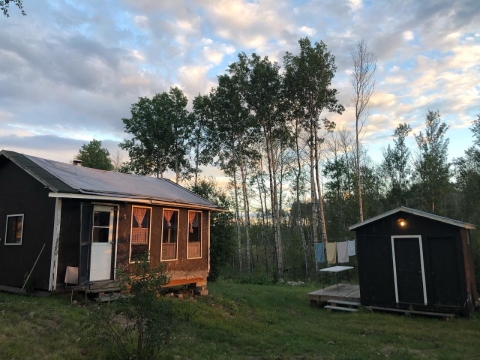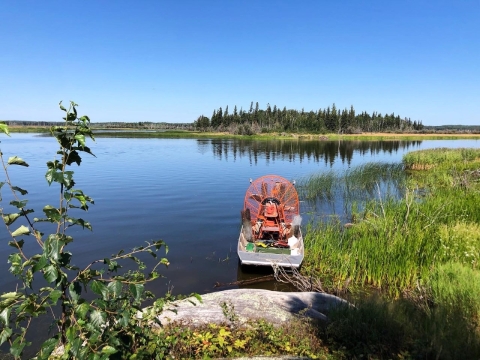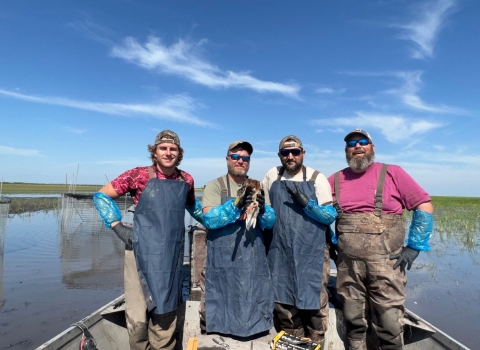I tried to fall asleep atop my bunk in this small plywood cabin, but I could not seem to drift into a slumber. The air was so still and hot with more loon calls drifting through the small open window than breeze. One called after the other and then their duet stumbled into one amplified sound. Just as quickly as they started, they fell silent, blanketing our camp in an absolute quiet. Now awake, I ventured outside to use the outhouse but stopped short to take in the moonlight and stars that illuminated the Churchill River and backlit the trees. Days earlier, we were able to see the northern lights in all their glory from that very spot. We were at a remote field camp in North Central Saskatchewan, far away from the everything else in the world, including our comfort and amenities, but happy to fulfill our part in a very important facet of North American waterfowl management: duck banding.
Banding in the far north was a welcome change of scenery after spending the past few years pre-season banding on the Dakota prairies. Our banding process was still the same though: scout the area for ducks, set the traps, bait the traps, and then hurry-up and wait to catch the birds before we could finally band them. However, we were scouting for ducks on a large river and marsh system by airboat rather than driving around looking for latent pockets of water.
Scouting for ducks during the first week was underwhelming, with an abundance of teal, several diving duck species and only small flocks of mallards (our target bird) in sight. We spent much of our time carving through the tall sections of bulrush and cattails in search of birds obscured in the vegetation. However, our veteran crew, Garrett Wilkerson (banding crew leader and USFWS Pilot Biologist), Gypsy Hanks (USFWS Wildlife Biologist), and Tyler Porter (USFWS Wildlife Biologist), were accustomed to seeing much larger flocks of mallards on the marsh at this time of year, which had not arrived yet. Nonetheless, we set bait and traps out in “ducky” areas, and hoped for the best.
It was exciting to watch migration in real-time in such a remote and pristine location. It was easy to pay attention to the comings and goings of birds without their presence concealed by the clutter of human influence on the landscape (infrastructure, sound pollution, habitat fragmentation etc.). In the first week or so, the forests echoed with a chorus of songbirds and the marsh had more yellowlegs than ducks. It seemed that with each passing day there were more mallards on the marsh, Canada geese high in the sky, and less songbirds in the trees. By month’s end, the forests were almost silent and the duck numbers and the few coots that we had hoped for in the beginning finally arrived, albeit just a little too late to catch in our traps. We ended up catching a fair number of ducks consisting mostly of American green-winged teal and a surprise common golden-eye on one of our last trapping days. Forgoing the creature comforts to rough it in the north woods for a month was well worth it to contribute to waterfowl conservation.











